| Listing 1 - 10 of 22 | << page >> |
Sort by
|
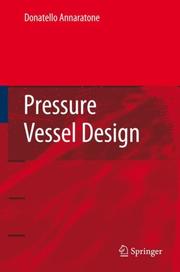
ISBN: 1281114855 9786611114855 3540491449 3540491422 3642080383 Year: 2007 Publisher: Berlin ; London : Springer,
Abstract | Keywords | Export | Availability | Bookmark
 Loading...
Loading...Choose an application
- Reference Manager
- EndNote
- RefWorks (Direct export to RefWorks)
This book guides through general and fundamental problems of pressure vessel design. It moreover considers also problems which seem to be of lower importance but which turn out to be crucial in the design phase. The basic approach is rigorously scientific with a complete theoretical development of the topics treated, but the analysis is always pushed so far as to offer concrete and precise calculation criteria that can be immediately applied to actual designs. This is accomplished through appropriate algorithms that lead to final equations or to characteristic parameters defined through mathematical equations. The first chapter describes how to achieve verification criteria, the second analyzes a few general problems, such as stresses of the membrane in revolution solids and edge effects. The third chapter deals with cylinders under pressure from the inside, while the fourth focuses on cylinders under pressure from the outside. The fifth chapter covers spheres, and the sixth is about all types of heads. Chapter seven discusses different components of particular shape as well as pipes, with special attention to flanges. The eighth chapter discusses the influence of holes, while the ninth is devoted to the influence of supports. Finally, chapter ten illustrates the fundamental criteria regarding fatigue analysis. Besides the unique approach to the entire work, original contributions can be found in most chapters, thanks to the author’s numerous publications on the topic and to studies performed ad hoc for this book.
Pressure vessels --- High pressure (Science) --- Design and construction. --- Pressure --- Engineering. --- Mechanics. --- Mechanics, Applied. --- Engineering design. --- Machinery and Machine Elements. --- Solid Mechanics. --- Engineering Design. --- Design, Engineering --- Engineering --- Industrial design --- Strains and stresses --- Applied mechanics --- Engineering, Mechanical --- Engineering mathematics --- Classical mechanics --- Newtonian mechanics --- Physics --- Dynamics --- Quantum theory --- Construction --- Industrial arts --- Technology --- Design --- Machinery. --- Machinery --- Machines --- Manufactures --- Power (Mechanics) --- Mechanical engineering --- Motors --- Power transmission --- Curious devices
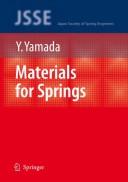
ISBN: 128107036X 9786611070366 3540738126 3540738118 3642093035 Year: 2007 Publisher: Berlin, Heidelberg : Springer-Verlag Berlin Heidelberg,
Abstract | Keywords | Export | Availability | Bookmark
 Loading...
Loading...Choose an application
- Reference Manager
- EndNote
- RefWorks (Direct export to RefWorks)
“Materials for springs” is basically intended for engineers related to spring materials and technologies who graduated from metallurgical or mechanical engineering courses in technical high school, or in other higher engineering schools, as well as those who are related to the purchase or sales of spring materials. The first chapter introduces into the fundamental selection processes of spring materials including the information sources on materials database. It is followed by the basic mechanisms and theories of spring failures such as fatigue fracture, creep/stress relaxation and stress corrosion cracking of metallic materials. The focuses of the second chapter is put on ferrous and non-ferrous metallic materials, including some materials developed in these two decades, such as high strength automobile suspension steels etc. In the third and fourth chapters, polymer materials, FRP (Fiber Reinforced Plastics), ceramics and C/C composite materials are the main subject respectively. In the fifth chapter, lists of Japanese spring material manufacturers and their material grades being produced, comparisons of spring materials in the Japanese Industrial Standards with some other foreign standards, etc, are summarized.
Bars (Engineering) --- Springs (Mechanism) --- Rods --- Elastic rods and wires --- Structural frames --- Mechanical engineering. --- Materials. --- Engineering. --- Mechanical Engineering. --- Materials Science, general. --- Machinery and Machine Elements. --- Construction --- Industrial arts --- Technology --- Engineering --- Engineering materials --- Industrial materials --- Engineering design --- Manufacturing processes --- Engineering, Mechanical --- Machinery --- Steam engineering --- Materials --- Materials science. --- Machinery. --- Machines --- Manufactures --- Power (Mechanics) --- Mechanical engineering --- Motors --- Power transmission --- Material science --- Physical sciences --- Curious devices
Book
ISBN: 1281137200 9786611137205 1402064608 1402064594 9048176484 Year: 2007 Publisher: Dordrecht : Springer,
Abstract | Keywords | Export | Availability | Bookmark
 Loading...
Loading...Choose an application
- Reference Manager
- EndNote
- RefWorks (Direct export to RefWorks)
Ancient China was outstanding in mechanical technology before the 15th century. Numerous ingenious machines were invented. However, due to incomplete documentation and loss of finished objects, most of the original machines cannot be verified and many of the inventions did not pass down to later generations. This book, based on the author’s research and teaching experiences over the last 20 years, is devoted to presenting an innovative methodology in the area of mechanical historiography for the systematic reconstruction design of ancient Chinese machines that have been lost to time. Its purpose is to generate all possible design concepts of lost machines. If the defined and/or concluded design specifications, topological characteristics, and - sign requirements and constraints are feasible, one of the resulting reconstruction designs should be the original design. Such an approach provides a logical tool for historians in ancient mechanical engineering and technology to further identify the possible original designs according to proven historical archives. However, this work will not deal with the credibility of historical literary works. It supposes that the lost machines existed, and tries to demonstrate the feasibility of reconstructing the lost designs. The book is organized in such a way that it can be used for teaching, research or self-study. Chapter 1 introduces the study, classifications, and process for the reconstruction design of ancient machinery.
Machinery --- Machine design --- History. --- Engineering design --- Machines --- Manufactures --- Power (Mechanics) --- Technology --- Mechanical engineering --- Motors --- Power transmission --- Design --- Design and construction --- Curious devices --- Engineering. --- Mechanical engineering. --- Machinery and Machine Elements. --- History of Science. --- Mechanical Engineering. --- Engineering, Mechanical --- Engineering --- Steam engineering --- Annals --- Auxiliary sciences of history --- Construction --- Industrial arts --- Machinery.
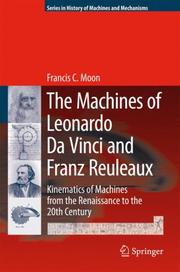
ISBN: 1281108316 9786611108311 1402055994 1402055986 Year: 2007 Publisher: Dordrecht, The Netherlands : Springer,
Abstract | Keywords | Export | Availability | Bookmark
 Loading...
Loading...Choose an application
- Reference Manager
- EndNote
- RefWorks (Direct export to RefWorks)
Ah the Machine; both coveted and criticized, life sustaining and life destr- ing yet always a symbol of human creativity and invention from the Rena- sance to robotics from the Wright brothers to the Wankel engine. There are more than a billion mechanical machines in our world of six billion humans. These machines are the source of both marvel and mayhem in the life of our planet. This book is about the evolution of these machines and the inv- tors and engineers who created them from the early Renaissance to the early 20th century. I have chosen two personalities who are icons of these two machine ages, Leonardo da Vinci [1452–1519] and Franz Reuleaux [1829– 1905], recognizing both the cadre of machine designers who in?uenced them as well as those who were in?uenced by the accomplishments of these two engineers. A major thesis of this book is that the evolution of machine design methodology, from the intuitive methods of the workshop to the math-based, engineering science analysis and synthesis of modern industrial design, was of equal achievement as the creation of the marvelous machines themselves. In the past two decades there has been increasing interest in rational me- ods of design from topology and optimization theories to genetic algorithms. In the teaching of design at the novitiate level, the importance of design - cles and iteration is emphasized. Yet often the historical background for e- lution of machine design is minimal or missing.
History. --- Engineering. --- Mechanical engineering. --- Engineering design. --- Science (General). --- History of Science. --- Machinery and Machine Elements. --- Mechanical Engineering. --- Engineering Design. --- Popular Science, general. --- Construction --- Industrial arts --- Technology --- Annals --- Auxiliary sciences of history --- Design, Engineering --- Engineering --- Industrial design --- Strains and stresses --- Engineering, Mechanical --- Machinery --- Steam engineering --- Design --- Machinery. --- Popular works. --- Machines --- Manufactures --- Power (Mechanics) --- Mechanical engineering --- Motors --- Power transmission --- Curious devices --- Machinery, Kinematics of --- Machine design --- Mechanical engineers --- Leonardo, --- Reuleaux, F. --- Knowledge --- Machine design.
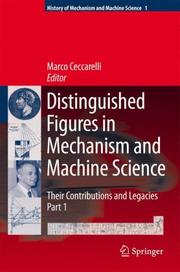
ISBN: 9781402063664 1281066338 9786611066338 1402063660 1402063652 Year: 2007 Publisher: Dordrecht Springer
Abstract | Keywords | Export | Availability | Bookmark
 Loading...
Loading...Choose an application
- Reference Manager
- EndNote
- RefWorks (Direct export to RefWorks)
This is the ?rst volume of a series of edited books whose aim is to collect contributed papers in a framework that can serve as a dictionary of names of individuals who have made contributions to the discipline of MMS (Me- anism and Machine Science). This dictionary project has the peculiarity that, through descriptions of the ideas and work of these individuals, the papers will illustrate mainly technical developments in the historical evolution of the individual ?elds that today de?ne the scope of MMS. Thus the core of each contribution will be a survey of biographical notes describing the efforts and experiences of these people. Finding appropriate technical experts as authors for such papers and - couraging them to write them has been a challenge; it is a demanding and time-consuming effort to produce such in-depth articles that delve deeply into the historical background of their topics of expertise. This ?rst volume of the dictionary project has been possible thanks to the invited authors who have enthusiastically shared the initiative and have spent time and effort in prep- ing papers that have the novel characteristics of survey and historical notes. The papers in this volume cover the wide ?eld of the History of Mechanical Engineering with speci?c focus on MMS. I believe that a reader who takes advantage of the papers in this book, as well as future ones, will ?nd further satisfaction and motivation for her or his work (historical or not).
Production management --- Machine elements --- Pure sciences. Natural sciences (general) --- DFMA (design for manufacture and assembly) --- Materials sciences --- wetenschapsgeschiedenis --- machines --- Mechanical engineering --- Mechanical engineers --- History. --- Engineers --- Engineering design. --- Engineering. --- Engineering Design. --- Machinery and Machine Elements. --- History of Science. --- Annals --- Auxiliary sciences of history --- Construction --- Industrial arts --- Technology --- Design, Engineering --- Engineering --- Industrial design --- Strains and stresses --- Design --- Machinery. --- Machinery --- Machines --- Manufactures --- Power (Mechanics) --- Motors --- Power transmission --- Curious devices
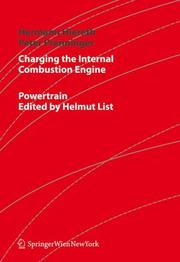
ISSN: 16136349 ISBN: 1281118273 9786611118273 3211471138 321133033X 3211998845 Year: 2007 Publisher: New York ; Wien : Springer,
Abstract | Keywords | Export | Availability | Bookmark
 Loading...
Loading...Choose an application
- Reference Manager
- EndNote
- RefWorks (Direct export to RefWorks)
Supercharging the reciprocating piston internal combustion engine is as old as the engine itself. Early on, it was used to improve the high-altitude performance of aircraft engines and later to increase the short-term peak performance in sporty or very expensive automobiles. It took nearly 30 years until it reached economic importance in the form of the ef?ciency-improving exhaust gas turbocharging of slow- and medium-speed diesel engines. It took 30 more years until it entered high-volume automotive engine production, in the form of both mechanically driven displacement compressors and modern exhaust gas turbocharging systems. Since, in spite of promising alternative developments for mobile applications, the internal combustion engine will remain dominant for the foreseeable future, its further development is essential. Today many demands are placed on automobile engines: on the one hand, consumers insistonextremeef?ciency,andontheotherhandlawsestablishstrictstandardsfor,e.g.,noiseand exhaust gas emissions. It would be extremely dif?cult for an internal combustion engine to meet these demands without the advantages afforded by supercharging. The purpose of this book is to facilitate a better understanding of the characteristics of superchargers in respect to their physical operating principles, as well as their interaction with piston engines. This applies both to the displacementcompressorandtoexhaustgasturbochargingsystems,whichoftenareverycomplex. It is not intended to cover the layout, calculation, and design of supercharging equipment as such–thisspecialareaisreservedforthepertinenttechnicalliterature–buttocoverthosequestions which are important for an ef?cient interaction between engine and supercharging system, as well as the description of the tools necessary to obtain an optimal engine–supercharger combination.
Internal combustion engines. --- Superchargers. --- Internal combustion engines --- Compressors --- Gas and oil engines --- Gas engines --- Engines --- Gas producers --- Heat-engines --- Motors --- Superchargers --- Engineering. --- Mechanical engineering. --- Thermodynamics. --- Engine Technology. --- Automotive Engineering. --- Mechanical Engineering. --- Chemistry, Physical and theoretical --- Dynamics --- Mechanics --- Physics --- Heat --- Quantum theory --- Engineering, Mechanical --- Engineering --- Machinery --- Steam engineering --- Construction --- Industrial arts --- Technology --- Engines. --- Machinery. --- Automotive engineering. --- Machines --- Manufactures --- Power (Mechanics) --- Mechanical engineering --- Power transmission --- Curious devices
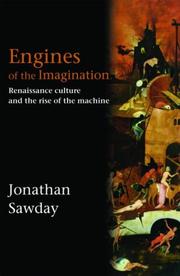
ISBN: 9780415350624 041535062X 0415350611 0203696158 9780415350617 9780203696156 9781134267880 9781134267927 9781134267934 Year: 2007 Publisher: London Routledge
Abstract | Keywords | Export | Availability | Bookmark
 Loading...
Loading...Choose an application
- Reference Manager
- EndNote
- RefWorks (Direct export to RefWorks)
Engineering sciences. Technology
---
History of civilization
---
anno 1600-1699
---
anno 1400-1499
---
anno 1500-1599
---
Machinery
---
History
---
930.85.44
---
Cultuurgeschiedenis: Renaissance
---
Maschine
---
Maschine.
---
Motiv (Literatur)
---
Technik
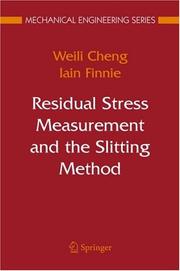
ISBN: 1280803614 9786610803613 0387390308 038737065X 1441942416 Year: 2007 Publisher: New York, NY : Springer,
Abstract | Keywords | Export | Availability | Bookmark
 Loading...
Loading...Choose an application
- Reference Manager
- EndNote
- RefWorks (Direct export to RefWorks)
Residual Stress Measurement and the Slitting Method provides complete coverage of the slitting method with new results in analysis, computation and estimation. It discusses different roles of residual stresses from the fracture mechanics perspective. Covering both near-surface and through-thickness residual stress measurements, the book serves as a reference tool for graduate students, researchers and practicing engineers. The authors include discussions on the general expressions for residual stresses acting on the site of a slit, the analysis based on fracture mechanics solutions and finite element computations, the estimations using continuous and piecewise functions with and without least squares fit, examples of residual stress measurement and error analysis, the measurement of stress intensity factors, and many more timely topics. With more than 130 figures, Residual Stress Measurement and the Slitting Method provides detailed formulations and examples of compliance functions, weighted least squares fit and convergence test in stress estimation, and computer programs to facilitate the implementation of the slitting method. This book is an invaluable reference for professionals and researchers in the field.
Residual stresses --- Fracture mechanics. --- Measurement. --- Failure of solids --- Fracture of materials --- Fracture of solids --- Materials --- Mechanics, Fracture --- Solids --- Deformations (Mechanics) --- Strength of materials --- Brittleness --- Penetration mechanics --- Structural failures --- Cooling stresses --- Mechanical prestressing --- Metals --- Welding stresses --- Stored energy of cold work --- Strains and stresses --- Fracture --- Fatigue --- Heat treatment --- Mechanics. --- Mechanics, Applied. --- Engineering. --- Engineering design. --- Mechanical engineering. --- Solid Mechanics. --- Machinery and Machine Elements. --- Engineering Design. --- Mechanical Engineering. --- Engineering, Mechanical --- Engineering --- Machinery --- Steam engineering --- Design, Engineering --- Industrial design --- Construction --- Industrial arts --- Technology --- Applied mechanics --- Engineering mathematics --- Classical mechanics --- Newtonian mechanics --- Physics --- Dynamics --- Quantum theory --- Design --- Machinery. --- Machines --- Manufactures --- Power (Mechanics) --- Mechanical engineering --- Motors --- Power transmission --- Curious devices
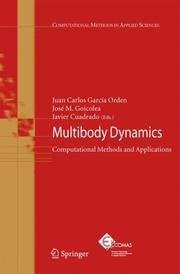
ISBN: 1280817275 9786610817276 1402056842 1402056834 9048174279 Year: 2007 Publisher: Dordrecht ; [London] : Springer,
Abstract | Keywords | Export | Availability | Bookmark
 Loading...
Loading...Choose an application
- Reference Manager
- EndNote
- RefWorks (Direct export to RefWorks)
The ECCOMAS Thematic Conference Multibody Dynamics 2005 was held in Madrid. This book contains the selected conference communications, representing the state-of-the-art in the advances on computational multibody models, from the most abstract mathematical developments to practical engineering applications.
Engineering. --- Computational intelligence. --- Mechanics. --- Mechanics, Applied. --- Vibration. --- Dynamical systems. --- Dynamics. --- Machinery. --- Industrial engineering. --- Production engineering. --- Theoretical and Applied Mechanics. --- Vibration, Dynamical Systems, Control. --- Computational Intelligence. --- Machinery and Machine Elements. --- Industrial and Production Engineering. --- Manufacturing engineering --- Process engineering --- Industrial engineering --- Mechanical engineering --- Management engineering --- Simplification in industry --- Engineering --- Value analysis (Cost control) --- Machinery --- Machines --- Manufactures --- Power (Mechanics) --- Technology --- Motors --- Power transmission --- Dynamical systems --- Kinetics --- Mathematics --- Mechanics, Analytic --- Force and energy --- Mechanics --- Physics --- Statics --- Cycles --- Sound --- Applied mechanics --- Engineering, Mechanical --- Engineering mathematics --- Classical mechanics --- Newtonian mechanics --- Dynamics --- Quantum theory --- Intelligence, Computational --- Artificial intelligence --- Soft computing --- Construction --- Industrial arts --- Curious devices --- Machinery, Dynamics of --- System analysis --- Mechanics, applied.
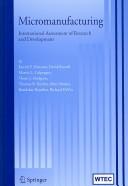
ISBN: 1280852127 9786610852123 1402059493 1402059485 9401784620 Year: 2007 Publisher: Dordrecht : Springer,
Abstract | Keywords | Export | Availability | Bookmark
 Loading...
Loading...Choose an application
- Reference Manager
- EndNote
- RefWorks (Direct export to RefWorks)
We have come to know that our ability to survive and grow as a nation to a very large degree depends upon our sci- tific progress. Moreover, it is not enough simply to keep abreast of the rest of the world in scientific matters. We 1 must maintain our leadership. President Harry Truman spoke those words in 1950, in the aftermath of World War II and in the midst of the Cold War. Indeed, the scientific and engineering leadership of the United States and its allies in the twentieth century played key roles in the successful outcomes of both World War II and the Cold War, sparing the world the twin horrors of fascism and tota- tarian communism, and fueling the economic prosperity that followed. - day, as the United States and its allies once again find themselves at war, President Truman’s words ring as true as they did a half-century ago. The goal set out in the Truman Administration of maintaining leadership in s- ence has remained the policy of the U. S. government to this day. Dr. John Marburger, the Director of the Office of Science and Technology (OSTP) in the Executive Office of the President, made remarks to that effect during 2 his confirmation hearings in October 2001. The United States needs metrics for measuring its success in meeting this goal of maintaining leadership in science and technology.
Microfabrication. --- Micromachining. --- Machining --- Manufacturing processes --- Manufactures. --- Engineering. --- Electronics. --- Engineering economy. --- Engineering design. --- Manufacturing, Machines, Tools, Processes. --- Machinery and Machine Elements. --- Electronics and Microelectronics, Instrumentation. --- Engineering Economics, Organization, Logistics, Marketing. --- Engineering Design. --- Design, Engineering --- Engineering --- Industrial design --- Strains and stresses --- Economy, Engineering --- Engineering economics --- Industrial engineering --- Electrical engineering --- Physical sciences --- Construction --- Industrial arts --- Technology --- Manufactured goods --- Manufactured products --- Products --- Products, Manufactured --- Commercial products --- Manufacturing industries --- Design --- Machinery. --- Microelectronics. --- Engineering economics. --- Microminiature electronic equipment --- Microminiaturization (Electronics) --- Electronics --- Microtechnology --- Semiconductors --- Miniature electronic equipment --- Machinery --- Machines --- Manufactures --- Power (Mechanics) --- Mechanical engineering --- Motors --- Power transmission --- Curious devices
| Listing 1 - 10 of 22 | << page >> |
Sort by
|

 Search
Search Feedback
Feedback About UniCat
About UniCat  Help
Help News
News